#Gnathia
Text

Gnathian kantaros
* 350-270 BCE
* Medelhavsmuseet, Stockholm
Stockholm, November 2023
#Gnathia#cup#4th century BCE#3rd century BCE#Apulia#ancient#art#chariot#horse#animals#Medelhavsmuseet#Stockholm#my photo
188 notes
·
View notes
Text
Greek epichysis

ITEM
Epichysis
MATERIAL
Pottery, Gnathia Ware
CULTURE
Greek
PERIOD
4th Century B.C
DIMENSIONS
183 mm x 80 mm
CONDITION
Good condition
PROVENANCE
Ex Emeritus collection (USA), collected from the 1950’s to the 1980’s by a distinguished university professor who served as Department head, Dean and Vice President of a major university.
Epichysis, epichysis or epichise is a vessel similar to an oil cruet with a long, thin spout and a flat base without a foot, used in libations to pour its contents (perfume) almost drop by drop. It has also been described as a small jug with a long, narrow neck and a 'spool body', fitted with an upright handle.
The Latin term "epichysis" comes from the Greek word for libation, derived from cneo (to pour) and epi (on). But as is often the case with names of this kind, the name is so vague that it can be applied to the wide variety of vessels, jugs, cruets, etc., used for pouring liquids, such as the kyathos or cyathos.
Read the full article
#ancient#ancientart#ancienthistory#antiquity#artefact#artifact#ancientartifacts#antiquities#art#artobject#ancientgreece#ancientgreek#ancientworld#history#classical#archaeology#greek#pottery#vessel#gnathia#epichysis
3 notes
·
View notes
Text
Egnazia e il mare, alla scoperta del parco a due passi dall'Adriatico
Egnazia e il mare, alla scoperta del parco a due passi dall’Adriatico

View On WordPress
0 notes
Photo

Hydra der Gnathia Ware
Blackglaze hydria with flaring rim adorned with a plastically moulded egg-and-dart frieze. The body is ribbed exept for a narrow band below the handles. Two horizontal, profiled handles rise from just below the shoulder. A strap handle runs vertically from neck to shoulder. White-yellow decoration: paint on egg-and-dart frieze on the rim, tendrils in the band below the handles and garland of lanceolate leaves on the neck. A band of red glaze on the rim, where the stem joins the body and on the outside of the foot. The Gnathian style was invented in Taranto, probably in the workshop pf the Iliopersis Painter, a proponent of the Apulian 'ornate style' (370-360 BC). In 330-320 this pottery reached its height in popularity. The production of this style ceased around the date 270 BC.
H. 46.3 cm.
#Hydra der Gnathia Ware#clay#pottery#ancient artifacts#archeology#archeolgst#history#history news#ancient history#ancient culture#ancient civilizations#ancient art
35 notes
·
View notes
Text

Gnathia Red-Figure Bell Krater Fragment
about 325 B.C.
Attributed to the Painter of Lecce 1075 (Greek (South Italian, Apulian), active 325 - 300 B.C.)
37 notes
·
View notes
Text
WAKE UP BABES NEW ISOPOD JUST DROPPED
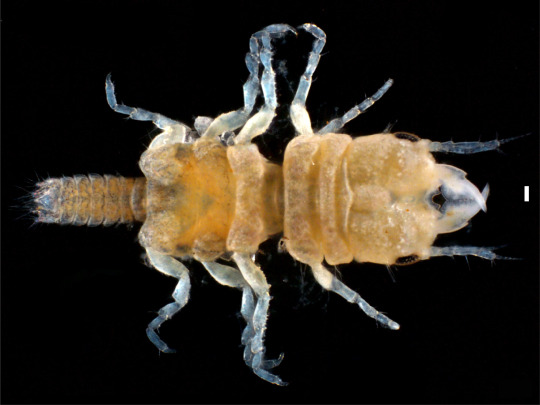
It was found in the Florida Keys and it is named Gnathia jimmybuffetti (yes, it is named after Jimmy Buffett). It is the first new gnathiid isopod to be discovered from the Floridian ecoregion in 100 years!! They are only 3 millimeters long and they feed on the blood of fish like a mosquito, which resulted in this excellent statement when the researchers were asked about the naming inspiration.
"By naming a species after an artist, we want to promote the integration of the arts and sciences," said Sikkel, whose research team named a similar species from the Caribbean after Bob Marley (Gnathia marleyi).
The researchers emphasize that while these organisms have a parasitic lifestyle, they are in no way likening these artists, whom they admire and respect, to parasites.
(Also the larger class of animals that this guy is a part of are called cryptofauna, and they make up the majority of the ocean's biodiversity, which I just wanted to add because I thought it was cool)
#science#science education#science side of tumblr#stem#stemblr#biochemistry#biology#animals#marine biology#marine life#isopods#jimmy buffett
127 notes
·
View notes
Text
Wasting away in margaritaville
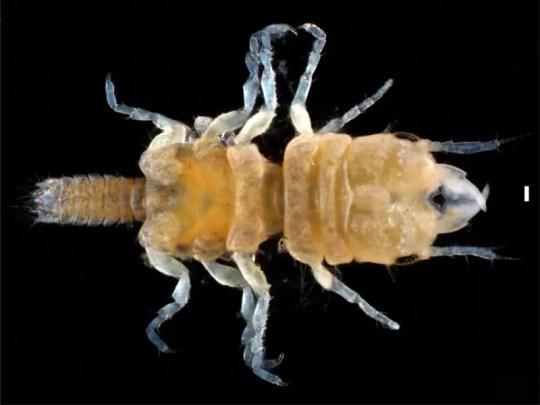
Gnathia jimmybuffetti sp.
6 notes
·
View notes
Text
Scientists discover new isopod species in the Florida Keys
An international team of scientists from the University of Miami Rosenstiel School of Marine, Atmospheric, and Earth Science and the Water Research Group from the Unit for Environmental Sciences and Management at the North-West University in South Africa have discovered a new species of marine cryptofauna in the Florida Keys. Cryptofauna are the tiny, hidden, organisms that make up the majority of biodiversity in the ocean.
The roughly three-millimeter-long isopod is one of only 15 species from the genus Gnathia currently known in the region.
The newly discovered species, Gnathia jimmybuffetti, which is a member of a group of crustaceans called gnathiid isopods, were collected using light traps set in shallow water and characterized using photomicrographs and genetic sequencing.
“Upon examination, it was determined to be a species that was previously unknown to science,” said senior investigator Paul Sikkel, a research professor in the Department of Marine Biology and Ecology at the Rosenstiel School. “It’s the first new Florida gnathiid to be discovered in 100 years.”
These tiny animals, which are found throughout the world’s oceans lead a very curious life. The juveniles are most active at night and feed on the blood of fishes like a mosquito or tick. The adults do not feed and live hidden in rubble on the ocean floor. Given their lifestyle, they are grouped as parasites, organisms that require a living host for survival.
The current severe marine heat wave events in Florida and other regions of the world that host coral reefs is a big concern for species like Gnathia jimmybuffetti, who cannot simply swim to cooler water. Work by Sikkel’s team on other gnathiid species has shown that at above average seawater temperatures, mortality rates increase, and abundance of gnathiids on reefs decrease significantly. To the extent these effects are likely to be similar for the myriad of other small invertebrates that live in or near the benthos (bottom), this can have major impacts on coral reef food webs.
Since the species was discovered in the Florida Keys and Sikkel and his team are long-time fans of Jimmy Buffett’s music — which is synonymous with the Florida Keys — they named the new species: Gnathia jimmybuffetti after the music legend.
advertisement
“By naming a species after an artist, we want to promote the integration of the arts and sciences,” said Sikkel, whose research team named a similar species from the Caribbean after Bob Marley (Gnathia marleyi).
“All species in an ecosystem play an important role and all species have something to teach us,” said Sikkel. “As we discover new species, we are reminded of how many undiscovered species there still are.”
The researchers emphasize that while these organisms have a parasitic lifestyle, they are in no way likening these artists, whom they admire and respect, to parasites.
The study, titled “Morphological description and molecular characterization of Gnathia jimmybuffetti sp. nov. (Crustacea, Isopoda, Gnathiidae): the first new gnathiid in 100 years from the Floridian ecoregion” was published on 12 June 2023 in the journal Bulletin of Marine Science. The authors include Anja Erasmus, Nico Smit, and Kerry Hadfield, North-West University Water Research Group, in South Africa, and Paul Sikkel, University of Miami Rosenstiel School of Marine, Atmospheric and Earth Science.
The study was funded by a grant from the National Science Foundation.
0 notes
Text
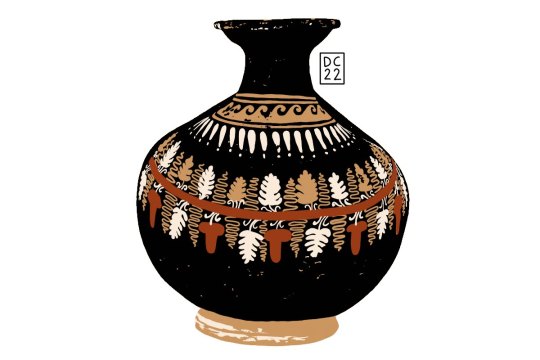
drawtober 2022 - day twenty six
On the collar, posts surmounting a necklace with pendants. On the belly, garland of vine leaves, tendrils and bunches.
Gnathia-style askos; Puglia, ca 340-330 BCE
0 notes
Photo
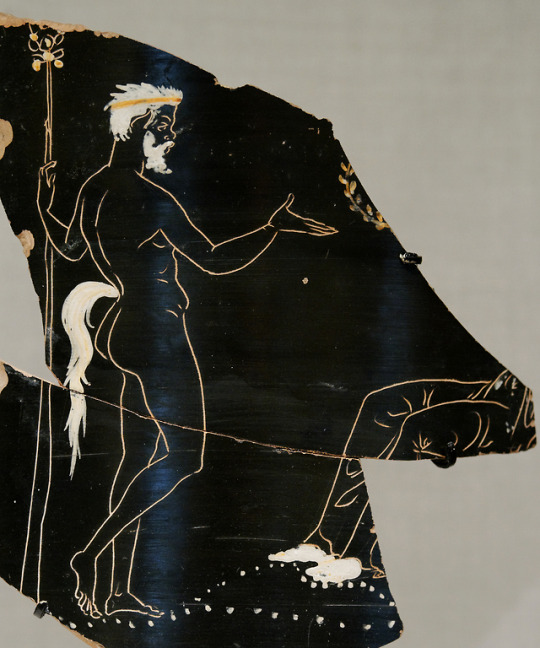
Silenus speaks to a woman. Fragment of an Apulian krater in the Gnathian style, artist unknown; ca. 360-340 BCE. Now in the Metropolitan Museum of Art. Photo credit: Marie-Lan Nguyen/Wikimedia Commons.
#classics#tagamemnon#Ancient Greece#Classical Greece#Magna Graecia#Apulia#classical mythology#Silenus#Silenos#art#art history#ancient art#Greek art#Ancient Greek art#Classical Greek art#South Italian art#Apulian art#vase painting#krater#Gnathia style#Gnathian style#Metropolitan Museum of Art
1K notes
·
View notes
Photo
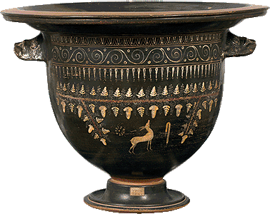
Bell krater.
Polychrome floral decoration (vines heavy with grapes) and a deer trying to reach a bunch of grapes. Gnathia style. Laurel Spray Group. Probably from Lamia. 350-275 B.C.
#bell krater#lamia#ancient greece#greek#vase#Late classic/early hellenistic period#vines#grapes#deer#gnathia
10 notes
·
View notes
Text
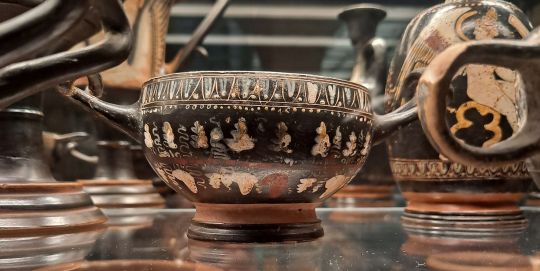
Gnathian "coffee cup"
c. 350-275 BCE
Medelhavsmuseet, Stockholm
Stockholm, November 2023
#Gnathia#4th century BCE#3rd century BCE#ancient#cup#tableware#art#terracotta#Medelhavsmuseet#Swedish Museums#my photo
78 notes
·
View notes
Note
Hi there! I have enjoyed your articles about animals you think would inspire great pokemon. Do you have a list for "terrifying sea crap* that would make great jrpg enemies"?
*Not limited to specific creatures, like, I think 'hagfish infesting a whale skeleton' makes a great, cohesive monster.
Thank you
Yes I've considered many ways for a whole entire whalefall to be a monster!
A giant pram bug could steer something other than a tunicate's corpse around, and many hydrozoans are huge eerie chains of mouths and tentacles, and there's SO many crustaceans that just suck blood or tunnel inside of a host.
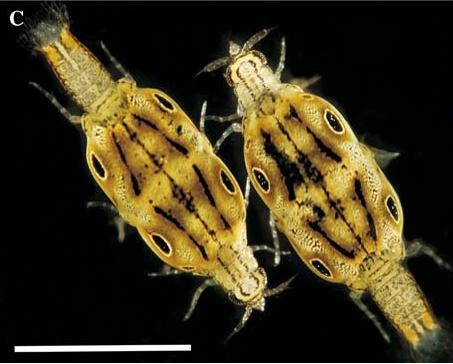
Gnathia are an interesting example because they're isopods that don't really look like isopods, and unusually for a parasite they're kind of colorful and super good swimmers, they're like sea ticks that shoot through the water and home in on fish like little torpedoes!
What's even weirder about them is that the adult males evolved to look almost exactly like stag beetles:
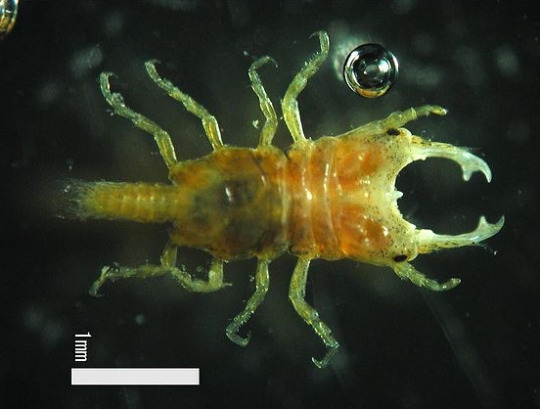
They no longer feed on blood at this stage but use the giant mandibles for mating :)
239 notes
·
View notes
Photo
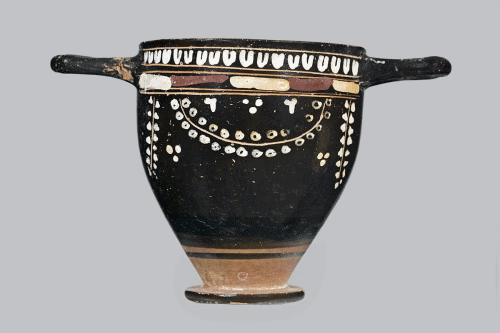
Gnathia skyphos (copa profunda)
Fecha: finales del siglo IV a.C.
Tipo de objeto: vasija
Medio, técnica: pintada, esmaltada en negro, arcilla
Dimensiones: altura: 7,6 cm; ancho (con asas): 11 cm
Numero de inventario: 81.86.A
Colección: Antigüedades clásicas, Museum of fine arts, Budapest
Información del museo
1 note
·
View note
Photo
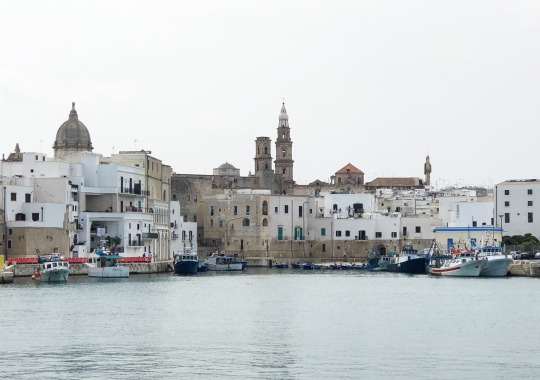
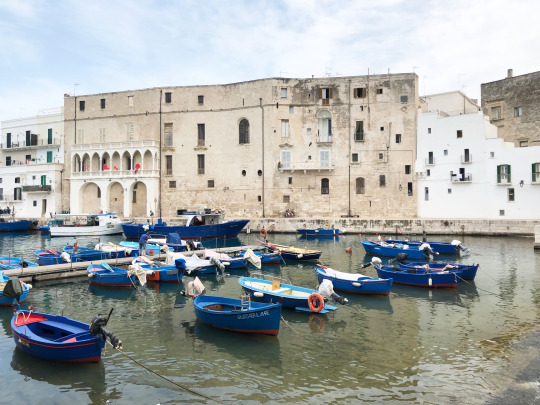
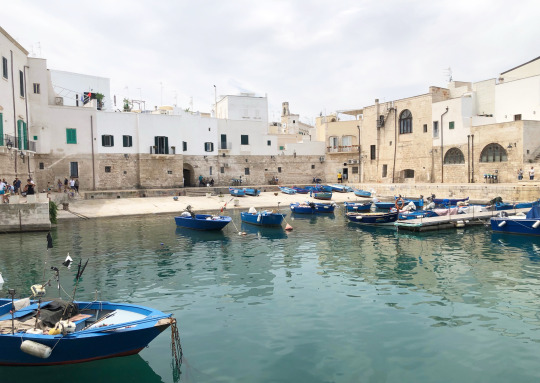
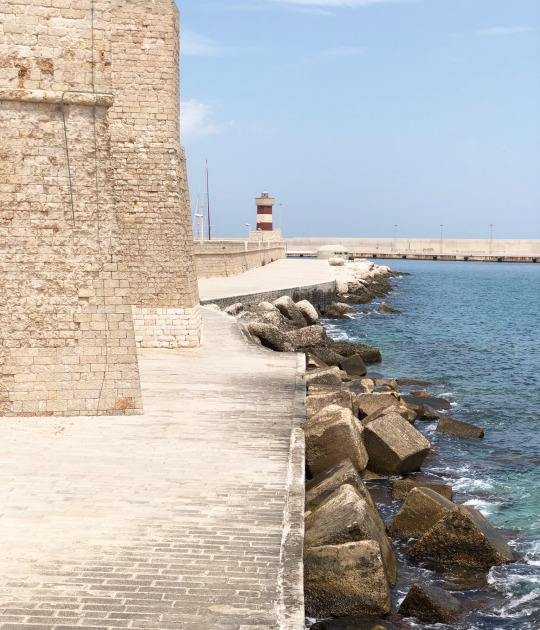
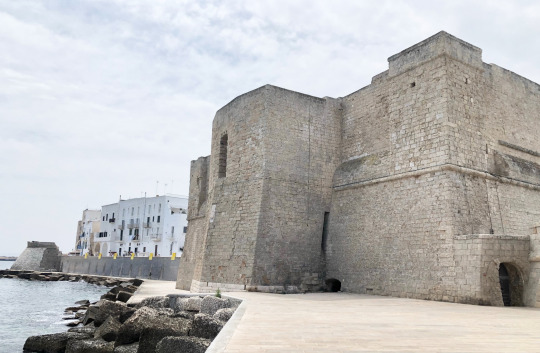

Monopoli
A település a görögök által alapított Gnathia városához tartozó kis falucska volt. Miután az osztrogótok 854-ben elpusztították Gnathiát, annak lakosai Monopoliba menekültek. Innen származik a város neve is, melynek jelentése „egyetlen város”. A következő évszázadokban a normannok, bizánciak birtoka volt. 1484-ben Velence uralma alá került, minek köszönhetően az Adriai-tenger egyik jelentős kikötőjévé nőtte ki magát. 1545-ben önálló városi rangot kapott.
0 notes